INTRODUCTION
In our last article, we introduced the 1947 black cast feature SEPIA CINDERELLA, and considered in some detail the appearance by Mercer Ellington’s big band, billed on screen as Gil Fuller’s Orchestra. For those wanting to revisit the production history of this film, click here.
In this follow-up article we document the remaining musical performances in the film, including the solo vocalists (Billy Daniels, Sheila Guyse and Rubel Blakey), Deek Watson and the Brown Dots, and the John Kirby Sextet.
The Vocalists
Billy Daniels
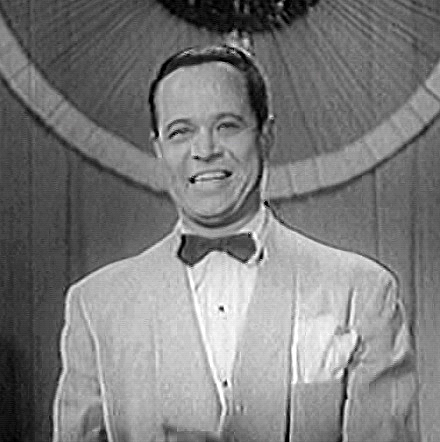
Born in 1915 in Jacksonville, Florida, Billy Daniels entertained thoughts of a career in law, but the Depression resulted in an abandonment of his pre-law studies. Daniels began singing on local radio in Jacksonville, and was a working professional by the early 1930s, performing as a “singing waiter” at Dickie Wells’ (not the famed jazz trombonist) nightclub in Harlem. Daniels was noticed by bandleader Erskine Hawkins, and he joined the Hawkins band in 1936. While his stay was apparently short-lived, Daniels did record threes sides with the band in July 1936, and appeared on stage with them at the Apollo Theater in December of that year.
Unlike many of his contemporaries, Billy Daniels was able to make the move from “big band singer” to “single” rather early in his career. He was on the radio throughout 1938, working for many different sponsors. Daniels appeared at the “Harlem Goes To Hollywood Charity Ball” in January 1940, and performed once again at the Apollo Theater in May 1941. During the remainder of the decade Daniels was booked throughout Manhattan, often in clubs on 52nd Street. Between 1944 and 1946, for example, he could be found at Tondaleyo’s, The Spotlight Club, The Three Deuces, Jock’s Music Room and the Club Baron. The following year, just prior to his first film appearance in SEPIA CINDERELLA, Daniels had an extended engagement in the revue at Small’s Paradise.
In April 1944 Daniels had made his first appearance on Broadway, performing in the short-lived stage play MEMPHIS BOUND, starring Bill “Bojangles” Robinson. He would return to Broadway many decades later in a hit production of GOLDEN BOY (1964-66), and in a less successful revival of HELLO DOLLY in 1975.
A turning point in Daniel’s career came in 1948 with his first hit record, “Old Black Magic.” The song, a collaboration between Harold Arlen and Johnny Mercer, had been written in 1942, and was recorded by the likes of Glenn Miller and Margaret Whiting. Daniels successfully recorded the song for Apollo Records in 1948, but it was his 1950 remake for Mercury that became a huge hit, with Daniels known as “Mr. Old Black Magic” for the remainder of his life.
The 1950’s found Daniels continuing his work in nightclubs across the nation, while also appearing on film (WHEN YOU’RE SMILING, 1950, and SUNNY SIDE OF THE STREET, 1951, both for Columbia, both starring Frankie Laine). In 1952 Daniels was featured in a 15 minutes television series over ABC, the first fully sponsored program featuring a black performer. In 1959 he had another television series, this one originating in in Los Angeles.
Billy Daniels lived until the age of 73, passing away in 1988. He was active until his death, appearing regularly on stage and in nightclubs (he had a long-term engagement at the Sands in Las Vegas), television and recordings.
Sheila Guyse
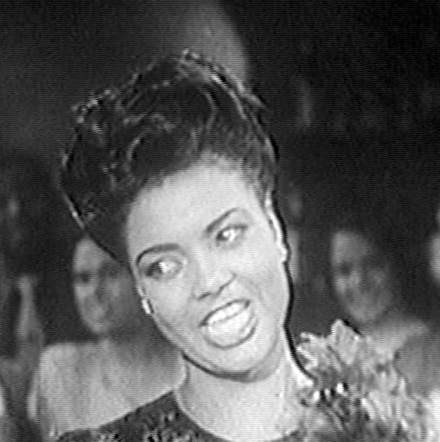
Less known than Billy Daniels is costar Sheila Guyse, an engaging actress and singer who never broke through to mainstream audiences, in part because of her skin color, but also because of recurrent health problems.
Born in Forest, Mississippi, in July 1925, the Guyse family moved to New York City in 1944 or 1945. Living in Harlem, and exposed to the great music of the early 1940s, Sheila honed her singing talents in many amateur shows, possibly even the famed presentation at the Apollo Theater. In 1945 Guyse made her nightclub debut at the Club Zombie in Detroit. She then moved to Broadway, appearing alongside Billy Daniels in MEMPHIS BOUND, which ran for only 36 performances. Guyse would return to Broadway twice in the decade, first as a replacement performer in FINIAN’S RAINBOW (1947-48), and then in the hit Maxwell Anderson/Kurt Weill musical tragedy LOST IN THE STARS (1949-50).
Guyse appeared in three black cast features in the 1940s. In addition to SEPIA CINDERELLA, she also starred in BOY! WHAT A GIRL! (Herald Pictures, 1947), and MIRACLE IN HARLEM (Herald Picture, 1948). (HARLEM FOLLIES OF 1949 is a recycling of musical performances from the earlier Harold Pictures feature films.)
While Sheila can be heard on the original cast album of LOST IN THE STARS, her only other record appearances is an LP for MGM titled “This Is Sheila.” I have not been able to audition the record and its contents are unknown to me.
While Guyse undoubtedly made nightclub appearances in the 1950s — there are reports of a return engagement in Detroit — her activities have proven difficult to trace. She appeared on the “Tonight Show,” hosted by Jack Paar, in 1958, and in television adaptations of The “Green Pastures” in 1957 and 1959.
Sheila Guyse passed away in Honolulu in 2013, age 88.
Rubel Blakey
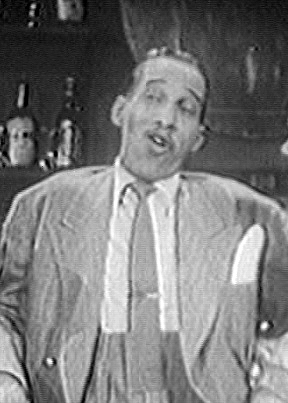
The black press referred to Rubel Blakey as “The Sepia Sinatra.” Critic Barry Ulanov, in a review of the Lionel Hampton band, said that Blakey and his “fatuous singing style should have disappeared long ago.” And, I suppose, never the twain shall meet.
Rubel Blakey — his first name is spelled in many different ways in print, although “Rubel” appears to be the correct spelling — was born in 1911 in Mississippi. By the late 1930s he had relocated to Chicago where he appeared in various nightclubs and ballrooms as both a master of ceremonies and vocalist. It is likely that Earl Hines first heard Blakey when he, Blakey, was serving as the MC at the Grand Terrace Ballroom. Blakey was asked to join Hines as a vocalist, although he does not appear on record or broadcast with the band. In 1941, the Lionel Hampton band played an engagement in Chicago, and Blakey was asked to join the Hampton organization. He was with Hampton for four years, appearing and recording with Hamp until 1945.
After leaving the Hampton band, Blakey resumed his career as a single, occasionally leading a band (Apollo Theater, February 1946), appearing as a vocalist (Club 845, February 1948), or serving as a master of ceremonies (Apollo Cafe, summer and fall 1948). Along with Sheila Guyse, Blakey was part of the Herald Pictures “stock company,” appearing in SEPIA CINDERELLA and MIRACLE IN HARLEM (1948).
A brief romance in 1949 resulted in the birth of daughter Marla, who would become a respected choreographer and dance teacher. She visited her father in Paris in the early 1960s and commented, “My dad’s life revolved around work, women, and wine. We lived in the brothel neighborhood of the Place Pigalle, and I got to know all the prostitutes. I loved every minute of it!”
In the early 1950s Blakey relocated to Paris where he appeared as a vocalist, but also developed his skills as a booker of talent. He became highly successful as a talent agent, and he spent the next decade booking talent on the Continent. He fell afoul of the law in the 1967, as reported in Jet Magazine: “French police…are keeping the lid clamped shut on the Rubel Blakey case. Rubel (who’s a former singer with the Lionel Hampton band and who had been one of the top booking agents in Europe) was hauled in with another “Brother,” Bill Baskervilles, and a couple of Cubans…and accused of trying to peddle a kilo of cocaine….” The following year he was out on a suspended sentence: “I wasn’t guilty in the first place,” Blakey told Jet.
At some point Blakey returned to the States, and he died at age 81, May 13, 1992, in Oaks Bluff, Mass.
Deek Watson and the Brown Dots
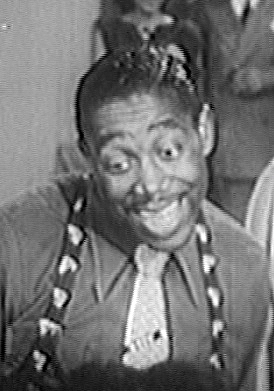
The Ink Spots was one of the most popular of all black vocal harmony groups, formed in 1934 when members of two midwestern groups, “Jerry and Charlie” (Jerry Daniels and Charlie Fuqua), and “The Four Riff Bothers” (which included Hoppy Jones and Deek Watson) came together as The Four Ink Spots. They played the Apollo Theater on a program headlined by Tiny Bradshaw and his Orchestra, and they were an immediate success. The Ink Spots began recording the following year, although their records, swinging arrangements in the manner of the early Mills Brothers, did not yet hint at the more romantic style with which they would later be associated.
In 1936, Jerry Daniels was replaced by tenor voice Bill Kinney, who was instrumental in the development of the group’s “top and bottom” musical approach: high tenor lead contrasted with talking bass chorus. Their first success in this style was “If I Didn’t Care,” recorded in 1939, which was followed by thirty hit records in the following decade!
In the mid 1940s there were personnel changes in the group, and legal action pitted Deek Watson and Charlie Fuqua against Bill Kenny, and on a third front, manager Moe Gale. When the dust settle, Watson was out of the group and had lost the right to use the Ink Spots moniker.
The Brown Dots, Deek Watson’s new vocal combo, began performing publicly in February 1945. Group member Pat Best, speaking of their Club Plantation (St. Louis) premiere, recalled, “We were terrible. They threw things at us and booed us off stage.” The group improved over time, and soon landed a recording contract with Manor Records. With their recording of “Sentimental Reasons” the group became an important entertainment draw.
By June 1946 the Brown Dots was performing in public, recording for the Manor label, and presenting two 15-minute broadcasts each week over over ABC. Their New York City nightclub premiere was at the Club 845, in July 1946, and appearances at the Apollo Theater soon followed.
The following year the Brown Dots made their film debut in BOY! WHAT A GIRL! (Herald Pictures, 1947), which was followed by SEPIA CINDERELLA. In both films the group sings two songs, each reflecting the rhythmic and harmonic style that made the group so popular. At this time the Brown Dots included Watson, as vocal lead, William “Pat” West, Jimmy Nabbie and Jimmy Gordon. Pat West supplied the guitar accompaniment.
Deek Watson was apparently a difficult man to work with, and after the completion of the two feature films, the other three members of the group split away, forming The Sentimentalists. Watson formed a second Brown Dots in 1947, about which little is known.
The story of Deek Watson and the Brown Dots has been told in great deal by Marv Goldberg, and I have relied heavily on his research for this article. His complete history of the Brown Dots and Sentimentalists can be found here.
Other Performers
Apus and Estrellita, stars of black vaudeville during the 1940s, are reported to appear in this feature, although they are not seen in any of the extant prints of the film. The content of their performance in the original release of the film is unknown, although a comment in the Variety review suggests that they performed a short comedy routine, probably similar in nature to their SOUNDIES.
The Band
The John Kirby Sextet
The passage of time has not treated the John Kirby Sextet kindly. Once one of unique sounds in jazz, the group is now mainly remembered by fans of Swing music, academics, and those who happen to hear their music on radio or Internet. (Still, its influence was felt in the music of the Howard Alden and Dan Barrett’s ABQ of the 1980s.) In the late 1930s and early 1940s, however, it was highly regarded as a combo with a very personal sound, one that, along with the Benny Goodman Trio and Quartet, could fairly lay claimed to the descriptive phrase “chamber jazz.” The sextet has been discussed in many print sources, and it is not my intent to duplicate the research and analysis of others, save that I find their music to be far more appealing and enjoyable than Gunther Schuller, who discusses the group at length in The Swing Era.
Like so many bass players of his generation John Kirby started out on tuba, switching solely to string bass by 1933. In the early 1930s he helped anchor the rhythm section of the Fletcher Henderson orchestra, moving on to Chick Webb and, briefly, the Mills Blue Rhythm Band. He was a favorite of producers of small group jazz, and he appears on at least fourteen sessions with Billie Holiday, Teddy Wilson, Mildred Bailey and others.
Kirby secured an engagement at the Onyx Club in 1937, and with some changes in personnel, put together a group of all star musicians: Charlie Shavers, trumpet and arranger; Russell Procope, alto sax; Buster Bailey, clarinet; Billy Kyle, piano and O’Neill Spencer, drums. The band was billed as “The Biggest Little band in the Land,” and it recorded regularly for Vocalion, Okeh and Columbia through 1942. Beginning in April 1940, and lasting for eight months, the band broadcast weekly over CBS radio, a program entitled “Flow Gently, Sweet Rhythm.” Maxine Sullivan often share the microphone as featured vocalist, and also appears the the band on recordings and broadcast transcriptions. With changes in personnel Kirby continued to lead the band through the war years; only Buster Bailey appears to have remained throughout this period. The Kirby sextet made its last recordings in September 1946.
For SEPIA CINDERELLA Kirby was able to reunite most of the original combo: Charlie Shavers, Buster Bailey and Billy Kyle were back on their respective instruments; replacing Russell Procope, who had joined Duke Ellington, was Charlie Holmes. A veteran of the New York jazz scene, Holmes was a strong section player and wonderful soloist in the Johnny Hodges tradition. Holmes had been with Cootie Williams a few years earlier, although he joined with the stipulation that he would only play section alto sax, and that Eddie “Cleanhead” Vinson would take the solos. Here he returned to the soloists role, and he shines throughout.
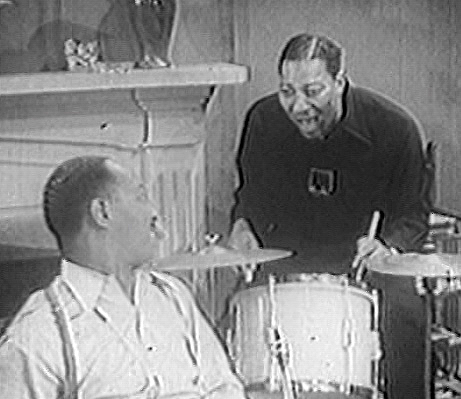
Sitting in on drums is one of the finest percussionists in the history of the music, Big Sid Catlett. Catlett was among the most versatile in jazz. He could swing a big band, that of Fletcher Henderson, Benny Goodman or Louis Armstrong, for example. He was equally comfortable working with vocalists, including those in the genre of blues such as Peetie Wheatstraw, Roosevelt Sykes or Trixie Smith. Catlett could play behind Charlie Parker and the boppers, or more tradition musicians like Louis Armstrong or Mezz Mezzrow. But it was as a small combo drummer that Catlett excelled, whether as the anchor of the rhythm section or as a soloist. His early death in 1951 was a major loss to the music.
A Note On Print Source
It appears that all contemporary copies of the film — an occasional 16mm print of the feature, the two John Kirby numbers, which circulate among collectors, and DVD/online copies — are all derived from the same print source. The telltale sings include identical splices in the opening sequence, and a slightly out-of-focus right side of the frame during Kirby’s second number.
Production materials give no hint as to the origin of the print that is in circulation, but one may certainly speculate on the matter. Produced by Herald Pictures, the film was distributed by the Screen Guild in a 70 minute version that was released October 18, 1947. Screen Guild is not credited in the surviving print.
It appears that Herald Pictures was unable to pay its creditors, and the by the early 1950s the rights to the feature, as well as BOY! WHAT A GIRL! had reverted to the Bank of America. Jack Rosenfeld, a veteran theater and film executive who had been Herald Production’s sales manager in 1946, wrote the New York’s Motion Picture Division in 1952, when SEPIA CINDERELLA was re-released nationally: “These pictures have been reclaimed by the Bank of America, we are releasing same for their salvage department.”
It is possible that the print material that exists today comes from this later re-release. The existing print is 67 minutes in length, three minute short of the original reported run time, and is possibly the result of the elimination of the routine by Apus and Estrellita.
The Music
SEPIA CINDERELLA is framed as a love story with music, and it should not be surprising that all of the songs performed by Billy Daniels, Sheila Guyse and Rubel Blakey are strictly popular ballads, with no jazz content. In the music of Deek Watson and John Kirby, however, we have very fine jazz performances.
(1) Can’t Find A Word To Say – John Kirby Sextet
The music begins behind the opening titles, with theme, then solos by Billy Kyle, Charlie Holmes and Charlie Shavers. We fade into the film proper in the middle of Charlie Shaver’s solo, with trumpet tightly muted. Shavers displays the masterful technique and fine imagination that makes him one of the most recorded trumpet players in jazz. The same can be said of Buster Bailey, who solos next. And then, a high point of the performance, a sixteen bar drum solo by Sid Catlett, whose dexterity, rhythmic sense and inventiveness continue to amaze to this day. Then, the closing theme as the rehearsal ends. “Honey chile,” actress Hilda Offley says to Sheila Guyse, “those boys sure can play.” Play indeed!
(2) Cinderella (Gil Fuller)
As noted in the first installment of this article, Gil Fuller’s “Cinderella” is the musical centerpiece of the film since it basically retells, in ballad form, the Cinderella fairy tale that is the framing element of the plot. The song is performed four times in the feature, first by Daniels and Guyse, in Daniels’s apartment as he “unveils” the song to her. Second, the song is presented on stage by Daniels in a ballroom setting, backed by Gil Fuller (Mercer Ellington) and his Orchestra. While the song is rather lackluster, Daniels, backed by the orchestra, provides a strong and unaffected reading of the title. Sheila Guyse also has her chance with song, in the bar setting, following Rubel Blakey; there is nothing wrong with her performance, although her terminal vibrato may not appeal to everyone. The song is reprised twice at the end of the film by Daniels and Guyse.
(3) Ring Around My Rosie (Gil Fuller)
Despite a title that does not promise much, this Walter Fuller composition is indeed the musical highlight for the Mercer Ellington orchestra. On a medium tempo song by Fuller, again of little musical consequence, Daniels once again demonstrates the straight forward, jazz-influenced vocal approach that made him a star for so many years. The tenor sax solo along the way is by Budd Johnson. This clip can be viewed here.
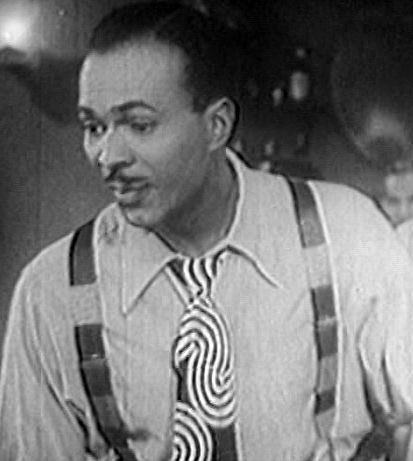
(4) Long Legged Lizzie (Herman Fairbanks, Deek Watson) – Deek Watson and the Brown Dots
The Brown Dots first contribution to the film is a medium tempo novelty piece that features Deek Watson’s fine lead, and contributions by the other members of the group. Jimmy Nabbie takes the second chorus, then Jimmy Gordon with a spoken interlude in the style of Hoppy Jones of the Ink Spots.
There is no shortage of black vocal harmony groups on film, although particular performance is wonderful, reflecting the fine arranging and professional presentation that made the Brown Dots very popular at this time.
(5) Oh Ho! It’s A Lovely Day (Eric Miller, Ruble Blakey, Rudy Toombs) – Ruble Blakey, vocal, accompanied by Walter Fuller and his Orchestra
If Blakey’s effort here is not exactly fatuous, as Barry Ulanov suggests in his record review, not much else can be said for Rubel Blakey’s vocal effort. There is nothing wrong with his voice or phrasing … but nothing unique or special, either. In all fairness, however, the song is rather mundane, and Blakey does as good a job as possible with the material at hand.
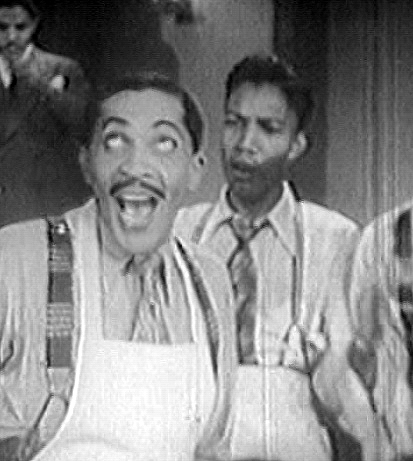
(6) Musicomania (published title for the tune recorded/released on Vogue Records by Charlie Shavers as Broadjump) – John Kirby Sextet.
This is the musical high point of the film, a reading of Charlie Shaver’s “Broadjump,” although the melody and harmony for the channel, the “B” section of the tune, has been changed from the earlier recording. Charlie Shaver takes the release during the theme statement, followed by a fine, rhythmically adventurous, piano solo from Billy Kyle. Charles Holmes gets eight bars, then back to Shaver’s, again with a tightly muted trumpet. Big Sid Catlett gets his say in a flamboyant and inventive sixteen bar solo. We are then back to Shaver’s arrangement, one that allows four bar statements by Buster Bailey. And then, we assume, back to the closing theme. But first, Shavers and Catlett trading fours, a stunning display of musical communication by two jazz masters! The theme is then restated, ending one of the most exciting three minutes in all classic jazz film. This title can be viewed here.
(7) Is It Right? (Deek Watson, Willie Best) – Deek Watson and the Brown Dots.
Deek Watson’s second performance is a easy going title that allows the group to share its ballad style. The first chorus is sung by Pat Best, with Jimmy Nabbie taking the release. The second chorus is split between Deek Watson and Jimmy Gordon, with the latter taking the “B” section of the song. This performance is relaxed, but ultimately less interesting, than the rhythm piece presented earlier in the film.
Evaluation
By this time, the first cycle of black cast films was nearing its end, to be taken up by a new school of filmmakers some twenty-five years later. But while fewer black cast films were made during the period 1946-1950, the quality of many was certainly stronger than during the previous decade. In fact, save for the color of the performers’ skin, at times it would be difficult to distinguish between the Herald Productions features and those films produced by mainstream “Poverty Row” studios such as Monogram, PRC and Screen Guild.
The musical performances in the feature range from commonplace to sublime, although I suppose that people who are into ballad performances will really enjoy Billy Daniels, Sheila Guyse and Rubel Blakey. However, for those who prefer their music swinging, John Kirby and Deek Watson certainly fit the bill! As noted above, black vocal harmony groups are strongly represented in shorts, features and SOUNDIES. The first performance by the Brown Dots is a fine example of the rhythmic approach taken by many similar groups.
The appearance by the John Kirby Sextet is another matter altogether. Not only is the group an important Swing Era combo, but the addition of Sid Catlett on drums makes this essential viewing for jazz fans and scholars. Both of the numbers are tuneful and well arranged — I would credit Charlie Shavers here — and the presentation by the group illustrates their tight, well-rehearsed sound. The solos are all inventive, and it is nice to hear Charlie Holmes honey-toned alto sax. This will be his some of his last solo work until he joins the Harlem Blues and Jazz Band in 1973.
John Kirby was never known as a soloist, and the soundtrack recording does not allow us to hear much of his string bass, although his presence is certainly felt throughout. It is the drumming of Sid Catlett, both in support of the sextet as well as in solo passages, that continues to amaze. Here, on screen, is audio and visual proof why he is considered to be one of the finest drummers on the history of jazz.
The film has fallen into the public domain and can be viewed on You Tube, or purchased on Amazon for less than $5.00. This small investment, plus of 67 minutes of your time, will result in the discovery of not only a well made film, but of some fabulous music performances as well.
